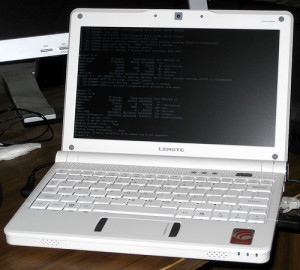
Ubuntu developers are working on a next generation display server known as Mir. A system-level component targeted as a replacement for the X window server system to unlock next-generation user experiences for devices ranging from Linux desktop to mobile devices powered by Ubuntu. This document outlines the motivation for the project, describes the high level design, summarizes the scope, and provides the roadmap of the Mir display server. The purpose of Mir is to enable the development of the next generation Unity. This will be quite a step forward for the Ubuntu distribution; they are planning to move away from Wayland and develop their own display server alternative to Xorg. Wayland was to be the future; but now they are moving towards their own solution instead. They want to create the next generation of the Unity desktop interface to replace the current incarnation. I hope they co-exist with the Wayland developers if they are intending to develop this alongside the Wayland computer display server protocol. Powering the next Unity desktop with the Mir display server could be interesting; but we will have to wait and see how this turns out.
The Xfree86 display server and then the Xorg descendant has powered Linux for 30 years and this requires a powerful replacement that can speed up the Linux desktop as well as offering great hardware compatibility for the massive amount of hardware combinations that are out in the wilds. The main thing is that they need to maintain backwards compatibility for all sorts of devices that might be running Linux. Such as a HP BL35p Blade Server or a Dell Poweredge machine. Even my ASUS eePC netbook can run a Gnome Shell desktop reasonably well. This is important when you are creating a new display server that will be powering all future Linux machines. Of course a server machine has no use for a fancy GUI. This is why the Linux virtual terminal is still around all of these years. You can access the server remotely by using the SSH or Secure Shell command. This can be used over a network or over the Internet to access a server or desktop machine to adjust configuration files or to administer a server. This command may be used like this: ssh -p 22 [email protected]. This command will connect to another machine on the network and allow you to run commands on that machine. This is especially important when you are using Blade Servers which are very noisy in operation and they are best accessed over a network from outside the cold server room.

Let us all hope that the Canonical venture will work out and they do not end up with a lemon. The Unity desktop is a very different desktop for Linux; but hardly a traditional Linux desktop per se. If you want a GUI on a server machine you would have something lightweight like Xfce4 that is fast and not as demanding as the Unity desktop. Of course the Ubuntu Server distribution offers the alternate installer and it boots to a Virtual Terminal that then allows you to login and administer the server machine. And you can install a Linux Apache MySQL and PHP setup easily during the installation to host your own website on your Linux box. The future of Linux will be very interesting indeed. With the growing popularity of the Steam gaming service on Linux; the future is getting brighter for open source software.